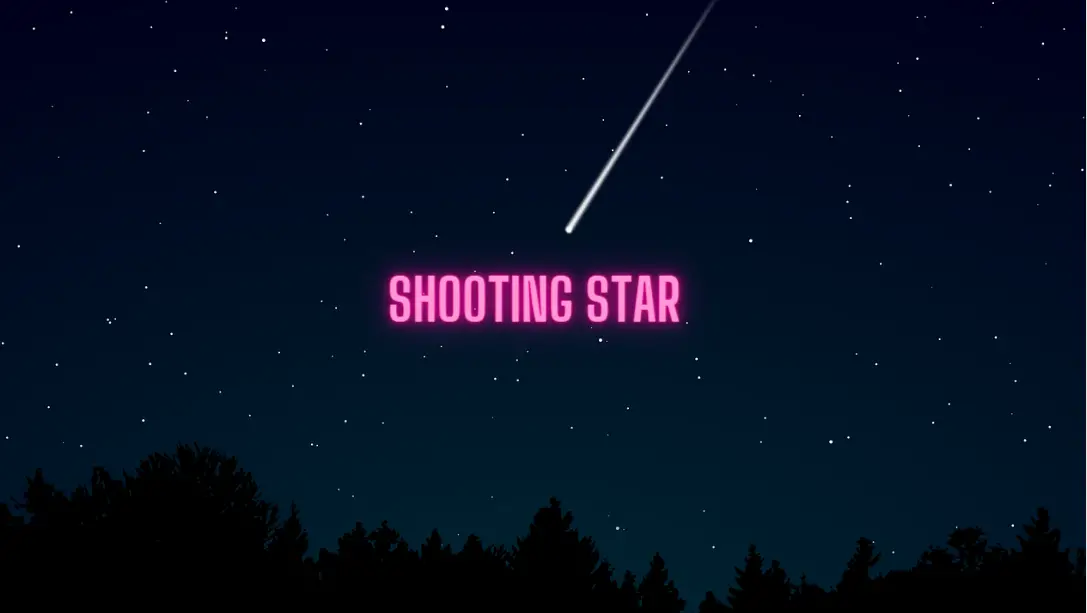People have been mesmerized by the vastness of the night sky and the secrets of the universe for millennia, and stargazing is one of the most popular forms of this pastime. The shooting star is one of the heavenly wonders that may occasionally be seen from Earth, and it is one of the phenomena that is both the most captivating and the most ephemeral. People all throughout the world have had their imaginations fired by shooting stars, which are frequently associated with desires and mythology. But what precisely is a shooting star, and what triggers this hypnotizing natural phenomenon?
A shooting star is not actually a star at all, despite the fact that its name suggests otherwise. In point of fact, it is a meteoroid, which is the name given to a tiny celestial object that is often little bigger than a grain of sand or a pebble. Meteoroids are fragments of asteroids and comets that continue to orbit the Sun despite having broken off from their parent bodies. When a meteoroid enters the atmosphere of Earth, it goes through a profound change and evolves into a meteor.
When a meteoroid travels through the atmosphere at high speed, it creates friction with the surrounding air, which causes the air to rapidly heat up to temperatures that can approach thousands of degrees Celsius. Because of the extreme heat, the meteoroid emits a brilliant glow, which results in the brilliant streak of light that can be seen from the ground below. Ionization of the surrounding air causes the meteor train, also known as a meteor train, to leave a bright trail behind the meteoroid. The characteristic look of shooting stars can be attributed to a bright trail that follows behind them.
There is a wide range of possibility for both the duration and visibility of a shooting star. Some meteors are so fleeting that they appear as simply flashes of light, while others can put on a spectacular show that lasts for a number of seconds. The magnitude of a shooting star is a measurement that is used to describe how bright it is. Fireball meteors are meteors that are so bright that they can briefly outshine the moon when it is full. These meteors leave an indelible mark on those who are lucky enough to witness them.
When there is a meteor shower, it is most likely that you may witness shooting stars. When the Earth travels through the debris that is left behind by comets or the fragments of asteroids that have disintegrated, meteor showers can occur. The constellation that the meteors seem to emanate from is referred regarded as the radiant, and it is from this constellation that these showers get their names. Take, for instance, the well-known meteor shower known as the Perseids, which gets its name from the constellation Perseus.
Finding a spot away from city lights that is dark enough to observe a meteor shower is essential if you want to get the most out of the experience. The greatest time to see shooting stars is often after midnight, when the sky is at its darkest. However, it is important to be patient because this is the best time to see them. When conditions are just right, it’s possible to see dozens or even hundreds of meteors in only one hour during a meteor shower. This makes for an unforgettable spectacle.
In spite of the fact that they are only visible for a brief moment, shooting stars have consistently managed to captivate people throughout history. They have been mentioned in a wide variety of tales, myths, and folklore, and they frequently represent good fortune, wishes, or even communications from the skies. People have traditionally wished upon falling stars in the belief that their wishes may one day be granted. Even in our current day and age, it is common practice to see the experience of seeing a shooting star as a portent of good fortune and a manifestation of the supernatural.
To summarize, a shooting star is a mesmerizing astronomical event that is brought about when a meteoroid of relatively modest size enters the atmosphere of the Earth. The immense heat produced by the friction generated as it hurtles through the air causes the meteoroid to shine brightly and leave behind a dazzling trail as it travels into space. As a result of the Earth’s passage through the debris left behind by comets or asteroids that have disintegrated, meteor showers present the best opportunity to witness shooting stars. No matter how you choose to interpret them—as cosmic wonders or as wish-granting messengers—shooting stars never fail to evoke feelings of awe and wonder in people. They serve as a constant reminder of the vastness and beauty of the cosmos that surrounds us.
![]()
